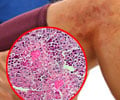Bronchial thermoplasty offers an alternative approach for patients who are inadequately controlled with medications to improve the control of their asthma.

‘Bronchial thermoplasty proves effective to open the airways of adults with severe, persistent asthma whose symptoms are not adequately controlled by inhaled corticosteroids or long-acting beta-agonists.’





To date, more than 6,800 patients in 33 countries have been treated with BT.
The "Post-FDA Approval Clinical Trial Evaluating BT in Severe Persistent Asthma" (PAS2 study), which involves hundreds of patients at dozens of research centers, looks at the long-term effects and safety of BT. "The results of the PAS2 study suggest that after a single series of BT procedures, patients experience long-term improvement in their asthma control," said lead author Geoffrey Chupp, MD, from Yale School of Medicine.
"These results indicate that BT works across the spectrum of severe asthma patients. We believe BT should be more widely considered as a treatment option in patients with poorly controlled severe asthma."
Two-hundred eighty four patients were enrolled in the study at 27 centers in the U.S. and Canada. Two-hundred seventy-nine study subjects had at least one BT procedure, and 271 had all three procedures.
In the 12 months prior to the first BT procedure, 78 percent of subjects had at least one severe exacerbation, 16 percent required hospitalization and 29 percent had ER visits.
Advertisement
Asthma-related hospitalizations and ER visits also saw significant, continuing reductions: 14.4 percent and 12.7 percent of subjects had hospitalizations, respectively, in the first and second year, and 18.3 percent and 13.5 percent made ER visits in the first and second year post-treatment.
Advertisement
"BT offers an alternative approach for patients who are inadequately controlled with medications designed to improve the control of their asthma."
Source-Eurekalert















